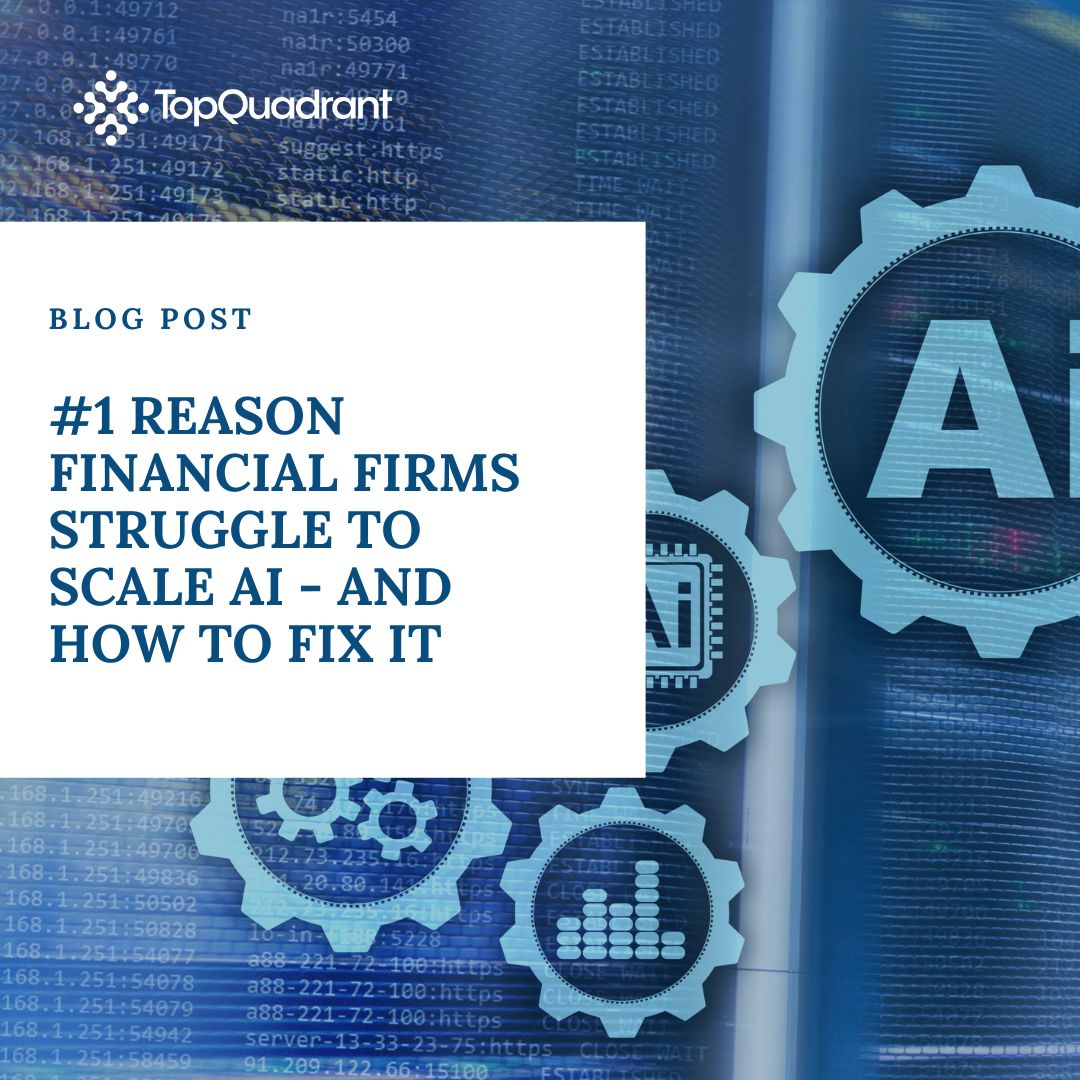Financial Services


Build and Manage Knowledge Graphs for Financial Services
Knowledge graphs provide a scalable and intelligent framework for financial data governance, connecting transactional data with policies, access controls, and compliance rules. This approach ensures faster, more accurate data discovery, reuse, and regulatory adherence for financial institutions.
With TopBraid EDG, organizations can make data machine-readable, enhancing AI-driven analytics and enabling both technical and business users to access structured, governed information with confidence.

Data Products for Financial Services
Transform financial data into governed, structured data products that harmonize information across divisions, despite differences in technology, terminology, and regulatory frameworks. Knowledge graphs enable:
- Controlled Vocabularies – Standardize financial and compliance data for accurate reporting and decision-making.
- Data Dictionaries & Governance Policies – Establish interconnected metadata for improved transparency and auditability.
- Automated Data Lineage & Classification – Track data origins and transformations while maintaining compliance.

Automate Compliance & Risk Management
Knowledge graphs streamline regulatory compliance, fraud detection, and risk management by automating key financial processes:
- Privacy & Compliance Enforcement – Map reference data to regulatory policies for automated adherence to GDPR, AML, PCI and other standards.
- Risk & Fraud Detection – Identify anomalies and patterns across financial data sources for proactive risk mitigation.
- AI-Powered Financial Services – Unify customer data across multiple sources for personalized recommendations and predictive insights.

Enhance Data Catalogs & Master Data Management (MDM)
Financial institutions rely on data catalogs, yet many fail to maximize their potential. Integrating knowledge graphs into a data catalog makes financial data more discoverable, reusable, and inherently tied to governance policies.
Similarly, knowledge graph-powered Master Data Management (MDM) provides a dynamic, real-time view of customers, vendors, transactions, and compliance data. Unlike traditional ETL pipelines, knowledge graphs enable flexible, adaptive data integration, ensuring seamless updates, accurate reporting, and AI-ready insights.
The TopQuadrant
Difference
TopBraid EDG is the ultimate knowledge graph creation and curation tool, and was built to get the most out of the most expressive and limitless information architecture, RDF.
Faster Time to Value
With over 20 years of experience in enterprise data solutions, TopQuadrant delivers business-ready knowledge graph capabilities—preloaded with accelerators, automation tools, and over 300 ontologies to get you up and running quickly.
Enabling AI & Innovation
Build the foundation for enterprise AI and LLMs, ensuring secure, connected data that drives real-time insights and next-generation innovation.
Enterprise-Grade Collaboration
TopBraid EDG helps teams define and access critical data through centralized search, workflow versioning, and deep integrations that unlock cross-functional insights.
Open, Standards-Based & Future-Proof
Fully compliant with W3C standards, ensuring transparency, interoperability, and no vendor lock-in—so your data remains accessible, portable, and scalable.
